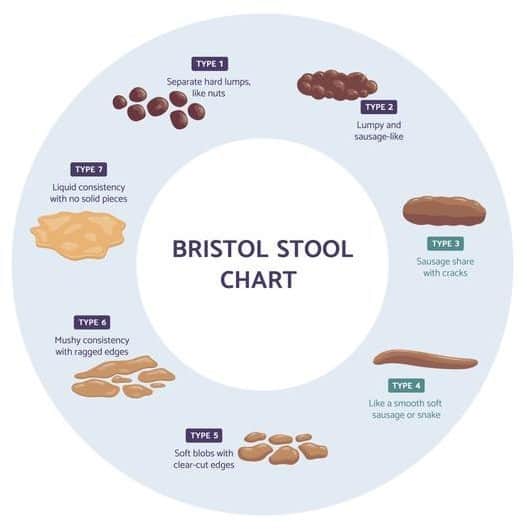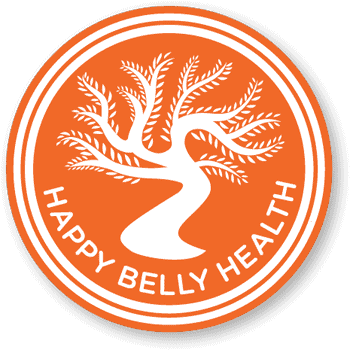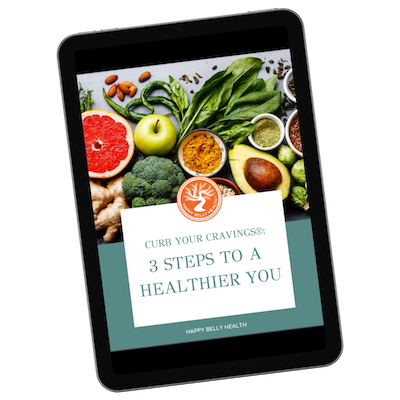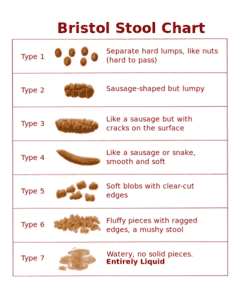Poop talk can be an uncomfortable conversation, but is a great window on the health of the body! Consider the following when assessing your stool to discuss with your practitioner.
Color
Medium/dark brown: typically reflects food that has been broken down well
Green: possible low stomach acid; lots of green foods in the diet that aren’t digesting well
Red-tinged: on the outside only, may be hemorrhoids; mixed through may indicate internal bleeding; pigment from red beets may also temporarily turn stool reddish
Black: possible blood in stool and bleeding in the gastrointestinal tract, considered a medical emergency; charcoal may also temporarily turn stool black (not emergency)
Tan/lighter brown/yellowish: bile may not be releasing well into the stool, excess consumption of orange pigmented foods, possible maldigested/malabsorbed fat in stool
White/gray: bile may be blocked; this is considered a medical emergency.
Speed of Bowel Movement
How long it takes to move the bowels is something to pay attention to – not urgent, not strained, but easy to pass. Pooping shouldn’t require lengthy restroom breaks.
Floating/Sticking/Sinking
While floating stools may be considered suspect for fat malabsorption, they must first be given about 2 minutes of toilet time to absorb water into the fiber contained in your stool. At this point they may indeed sink. Another way to assess for fat malabsorption is to see if the stool sticks to the toilet bowl after flushing – this may suggest attention needs to be paid to fat digestion.
Odor
Stool may have a distinct odor (probably not roses), but strong and foul smelling stool can indicate a problem. Some “off” smells to consider include: swampy smelling (like those flowers that sat in the vase for too long), sulfurous, vinegary, or otherwise putrid. This may be caused by microbial dysbiosis, poor movement in the digestive tract, or other causes.
Consistency and Shape
Thickness and shape of the stool can also be considered – pencil-like can suggest faster transit time (how long it takes for food to pass from mouth to anus), while too-wide-to-comfortably-pass can indicate stools may not be moving regularly enough.
Please refer to the Testing Transit Time post for more information.
Small, invisible amounts of mucus in the stool are normal, however, regular, large amounts of passing mucus may indicate inflammation in the gut. See next page for the Bristol Stool Chart.
Quantity
Typically, an adult will pass about an arm’s length of solidly formed stool daily.
A Note On Infants’ Stool
Exclusively breastfed infants will stool more frequently than those that are being fed formula or solids, which slows down transit time. However, even exclusively breastfed babies should be stooling daily, and for newborns, it is normal to stool after each feed. Exclusively breastfed infants do not “use up all the breastmilk and so have nothing to expel,” as stool is not only comprised of unabsorbable food remnants, but also a mix of bacteria, toxins, inorganic minerals, and dead cells. Infant stool is typically the texture of peanut butter, with or without seeds. It is often yellow, though may be tinged green or orange depending on mom’s diet and food reactions.
A Bristol Stool Chart is a standardized tool used to determine the consistency of a stool: whether a stool is “normal” or tends towards looser or more constipated. Since this tool is standardized, it’s understood amongst practitioners-in-the-know what a certain number means.
On the Bristol, types 3 and 4 are considered “normal” (and some practitioners also consider 5 as normal).
Constipation can be considered type 1 or 2 on the Bristol; additionally, constipated can be viewed by some practitioners as fewer than one bowel movement per day, including in babies.
Looser stools are 5 or 6 on the Bristol, with 7 as diarrhea, which may also present as three or more very watery stools per day.
Clarify with your provider if you’re experiencing diarrhea or a tendency towards looser stools that is less frequent than diarrhea.
An individual may fluctuate between various stool compositions, such as in a small intestinal microbial overgrowth dynamic, or typically produce consistent stools daily.

Interested in exploring your poop further? Read more here https://draxe.com/health/poop/






